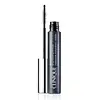What's inside
What's inside
 Key Ingredients
Key Ingredients

 Benefits
Benefits

 Concerns
Concerns

 Ingredients Side-by-side
Ingredients Side-by-side

Water
Skin ConditioningCandelilla Cera
EmollientAcacia Decurrens/Jojoba/Sunflower Seed Wax Polyglyceryl-3 Esters
EmollientCI 77499
Cosmetic ColorantCopernicia Cerifera Cera
EmollientPPG-25-Laureth-25
EmulsifyingGlycerin
HumectantStyrene/Acrylates/Ammonium Methacrylate Copolymer
Potassium Cetyl Phosphate
EmulsifyingSteareth-21
CleansingAlcohol Denat.
AntimicrobialAcacia Senegal Gum
MaskingButylene Glycol
HumectantCetyl Alcohol
EmollientSilica
AbrasiveSimethicone
EmollientSteareth-2
EmulsifyingPhenoxyethanol
PreservativeHydroxyethylcellulose
Emulsion StabilisingImidazolidinyl Urea
PreservativePropylene Glycol
HumectantMica
Cosmetic ColorantEthylparaben
PreservativeMethylparaben
PreservativeTetrasodium EDTA
Propylparaben
PreservativeDipotassium Phosphate
BufferingSodium Hyaluronate
HumectantPentaerythrityl Tetraisostearate
EmollientGlycoproteins
Skin ConditioningTriethoxycaprylylsilane
Silica Dimethyl Silylate
EmollientBiotin
AntiseborrhoeicSodium Chondroitin Sulfate
Skin ConditioningAtelocollagen
Skin ConditioningWater, Candelilla Cera, Acacia Decurrens/Jojoba/Sunflower Seed Wax Polyglyceryl-3 Esters, CI 77499, Copernicia Cerifera Cera, PPG-25-Laureth-25, Glycerin, Styrene/Acrylates/Ammonium Methacrylate Copolymer, Potassium Cetyl Phosphate, Steareth-21, Alcohol Denat., Acacia Senegal Gum, Butylene Glycol, Cetyl Alcohol, Silica, Simethicone, Steareth-2, Phenoxyethanol, Hydroxyethylcellulose, Imidazolidinyl Urea, Propylene Glycol, Mica, Ethylparaben, Methylparaben, Tetrasodium EDTA, Propylparaben, Dipotassium Phosphate, Sodium Hyaluronate, Pentaerythrityl Tetraisostearate, Glycoproteins, Triethoxycaprylylsilane, Silica Dimethyl Silylate, Biotin, Sodium Chondroitin Sulfate, Atelocollagen
Water
Skin ConditioningAcrylates Copolymer
Kaolin
AbrasiveCopernicia Cerifera Wax
PEG-15 Glyceryl Stearate
EmulsifyingSilica
AbrasiveButylene Glycol
HumectantAlcohol
AntimicrobialHydrogenated Rapeseed Alcohol
EmollientBentonite
AbsorbentPolyvinyl Alcohol
Sucrose Distearate
EmollientStearic Acid
CleansingSimmondsia Chinensis Seed Oil
EmollientDimethicone
EmollientSimethicone
EmollientVp/Va Copolymer
Nylon-66
Tocopherol
AntioxidantAminomethyl Propanediol
BufferingAminomethyl Propanol
BufferingXanthan Gum
EmulsifyingChlorphenesin
AntimicrobialSodium Dehydroacetate
PreservativePhenoxyethanol
PreservativeCI 77491
Cosmetic ColorantCI 77492
Cosmetic ColorantCI 77499
Cosmetic ColorantCI 77891
Cosmetic ColorantCI 75470
Cosmetic ColorantCI 19140
Cosmetic ColorantCI 42090
Cosmetic ColorantCI 77007
Cosmetic ColorantCI 77163
Cosmetic ColorantCI 77288
Cosmetic ColorantCI 77742
Cosmetic ColorantCI 77289
Cosmetic ColorantWater, Acrylates Copolymer, Kaolin, Copernicia Cerifera Wax, PEG-15 Glyceryl Stearate, Silica, Butylene Glycol, Alcohol, Hydrogenated Rapeseed Alcohol, Bentonite, Polyvinyl Alcohol, Sucrose Distearate, Stearic Acid, Simmondsia Chinensis Seed Oil, Dimethicone, Simethicone, Vp/Va Copolymer, Nylon-66, Tocopherol, Aminomethyl Propanediol, Aminomethyl Propanol, Xanthan Gum, Chlorphenesin, Sodium Dehydroacetate, Phenoxyethanol, CI 77491, CI 77492, CI 77499, CI 77891, CI 75470, CI 19140, CI 42090, CI 77007, CI 77163, CI 77288, CI 77742, CI 77289
 Reviews
Reviews

Ingredients Explained
These ingredients are found in both products.
Ingredients higher up in an ingredient list are typically present in a larger amount.
Butylene Glycol (or BG) is used within cosmetic products for a few different reasons:
Overall, Butylene Glycol is a safe and well-rounded ingredient that works well with other ingredients.
Though this ingredient works well with most skin types, some people with sensitive skin may experience a reaction such as allergic rashes, closed comedones, or itchiness.
Learn more about Butylene GlycolCi 77499 is also hydrated iron III oxide. It is created from mixing red and black iron oxides. This helps give shades of darkness to a product.
Iron III oxides are classified as inorganic chemicals for coloring.
Phenoxyethanol is a preservative that has germicide, antimicrobial, and aromatic properties. Studies show that phenoxyethanol can prevent microbial growth. By itself, it has a scent that is similar to that of a rose.
It's often used in formulations along with Caprylyl Glycol to preserve the shelf life of products.
Silica, also known as silicon dioxide, is a naturally occurring mineral. It is used as a fine, spherical, and porous powder in cosmetics.
Though it has exfoliant properties, the function of silica varies depending on the product.
The unique structure of silica enhances the spreadability and adds smoothness, making it a great texture enhancer.
It is also used as an active carrier, emulsifier, and mattifier due to its ability to absorb excess oil.
In some products, tiny microneedles called spicules are made from silica or hydrolyzed sponge. When you rub them in, they lightly polish away dead skin layers and enhance the penetration of active ingredients.
Learn more about SilicaSimethicone is a silicone. It is an emollient and used to reduce foaming in a product. It is also often used to coat sunscreen ingredients for better spreadability.
This ingredient is created by mixing dimethylpolysiloxane and hydrated silica.
Water. It's the most common cosmetic ingredient of all. You'll usually see it at the top of ingredient lists, meaning that it makes up the largest part of the product.
So why is it so popular? Water most often acts as a solvent - this means that it helps dissolve other ingredients into the formulation.
You'll also recognize water as that liquid we all need to stay alive. If you see this, drink a glass of water. Stay hydrated!
Learn more about Water